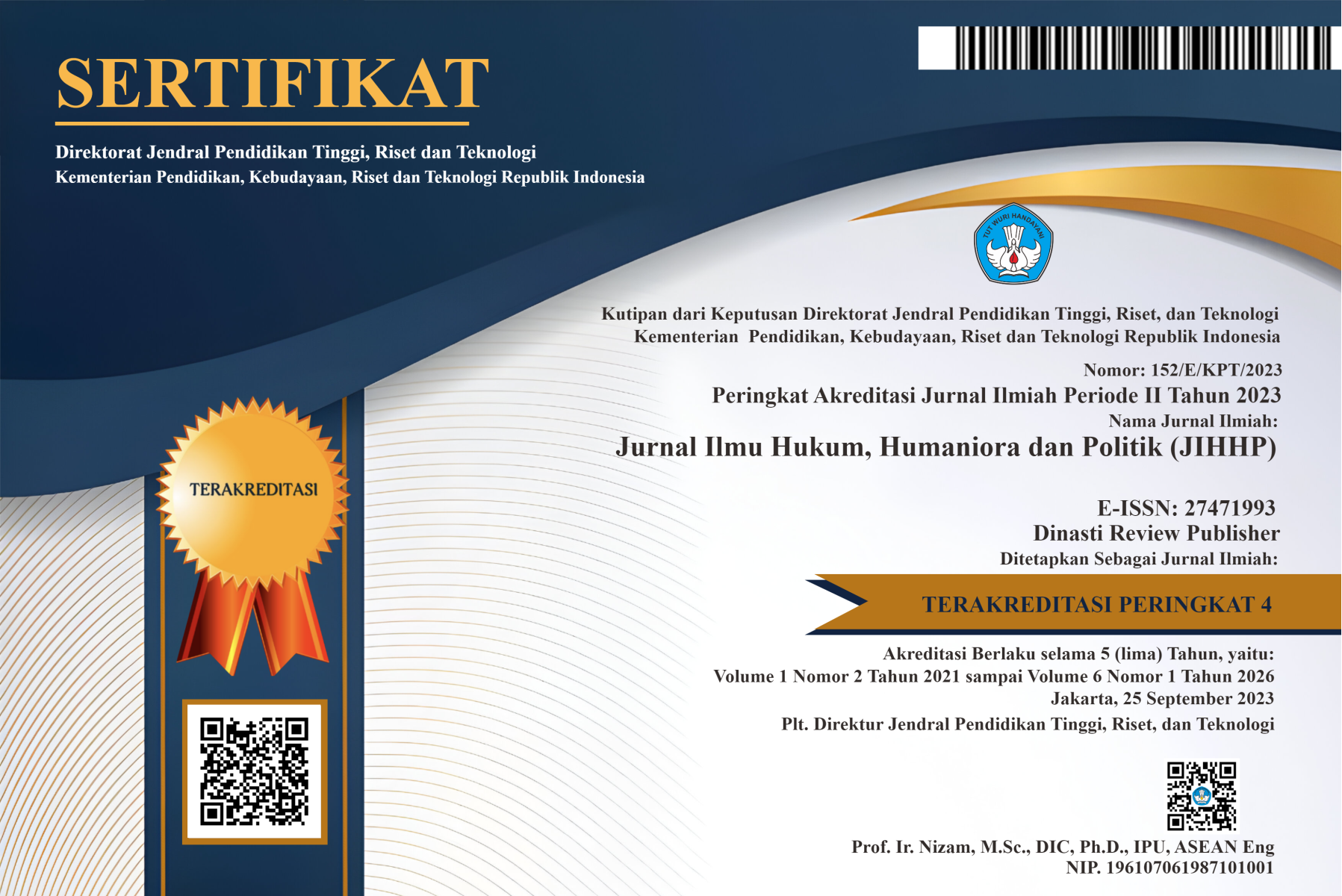Collaborative Governance Pada Pemanfaatan Infrastruktur Kepemudaan dan Olahraga Kota Bandung (di Kecamatan Antapani Tahun 2023)
DOI:
https://doi.org/10.38035/jihhp.v4i4.2129Keywords:
Collaborative Governance, Infrastructure, Sport, YouthAbstract
Bandung city has great potential in the field of youth and sports, which is marked by the first national level youth title given by the Indonesian Ministry of Youth and Sports as well as various achievements in national and international sports. To improve the quality of this sector, more attention from the government is needed, one of which is in terms of infrastructure. One of the sub-districts of Bandung City which has quite a large youth and sports infrastructure is Gasibu Mini, Antapani Sub-district. This research was motivated by collaboration carried out by the Antapani District government with various stakholders in utilizing the Gasibu Mini sports infrastructure and Antapani Youth Space. Researchers use collaborative governance assessment theory which consists of three dimensions. The method used is descriptive with a qualitative approach. The result is that in the stakeholders representation dimension, the Antapani District has made decisions that adequately represent the interests of stakeholders and regularly communicates. In the distribution of authority dimension, there is a formal and informal division of authority, but supervision carried out by the District is not optimal and there is no MoU for implementing collaboration. Dimensions of accountability mechanisms, accountability is carried out by actors but there are still limited resources. The conclusion shows that the implementation of collaborative governance in the use of youth and sports infrastructure in Antapani District has been implemented but is not optimal in several dimensions.
References
Ansell, Chris, and Alison Gash. (2008). Collaborative Governance in Theory and Practice. Journal of Public Administration Research and Theory, 18(4), 543–71. doi: 10.1093/jopart/mum032.
Astuti, Retno Sunu, dkk. (2020). Collaborative Governance dalam Perspektif Administrasi Publik. Universitas Diponegoro Press.
Aswin, dkk. (2022). Collaborative Governance Model in The Development Center of Economic Empowerment and Community Creativity in Bandung City. Famosa Journal of Multidisciplinary Research, 1(5). https://doi.org/10.55927/fjmr.v1i5.1071
Choirul, Saleh. (2020). Konsep, Pengertian, dan Tujuan Kolaborasi. Universitas Terbuka.
Fajri, Muchamad. (2016). Collaborative Governance Dalam Perencanaan Ruang Terbuka Hijau Di Kota Malang Tahun 207. 15.
Ratner, B. D. (2012). Collaborative Governance Assessment. Research Program On Aquatic Agricultural System 4–5.
Sugiyono. (2020). Metode Penelitian Kualitatif dan R and D. AlfaBeta.
Peraturan Pemerintah Nomor 41 Tahun 2011 Tentang Pengembangan Kewirausahaan dan Kepeloporan Pemuda
Peraturan Daerah Kota Bandung Nomor 1 Tahun 2016 tentang Kepemudaan
Undang-Undang Nomor 3 Tahun 2005 tentang Sistem Keolahragaan Nasional
Undang-Undang Nomor 19 Tahun 2016 tentang Perubahan Atas Undang-Undang Nomor 11 Tahun 2005 tentang Cipta Kerja
Undang-Undang No. 23 Tahun 2014 tentang Pemerintahan Daerah
Peraturan Walikota (PERWALI) Kota Bandung No. 27 Tahun 2022 tentang Perubahan Atas Peraturan Wali Kota Bandung Nomor 35 Tahun 2020 Tentang Pembangunan Dan Pengembangan Ruang Kepemudaan (YOUTH SPACE)
Downloads
Published
How to Cite
Issue
Section
License
Copyright (c) 2024 Naomi Glori Natalia, Muradi Muradi, Dede Sri Kartini

This work is licensed under a Creative Commons Attribution 4.0 International License.
Hak cipta :
Penulis yang mempublikasikan manuskripnya di jurnal ini menyetujui ketentuan berikut:
- Hak cipta pada setiap artikel adalah milik penulis.
- Penulis mengakui bahwa Jurnal Ilmu Hukum, Humaniora dan Politik (JIHHP) berhak menjadi yang pertama menerbitkan dengan lisensi Creative Commons Attribution 4.0 International (Attribution 4.0 International CC BY 4.0) .
- Penulis dapat mengirimkan artikel secara terpisah, mengatur distribusi non-eksklusif manuskrip yang telah diterbitkan dalam jurnal ini ke versi lain (misalnya, dikirim ke repositori institusi penulis, publikasi ke dalam buku, dll.), dengan mengakui bahwa manuskrip telah diterbitkan pertama kali di JIHHP.
















































